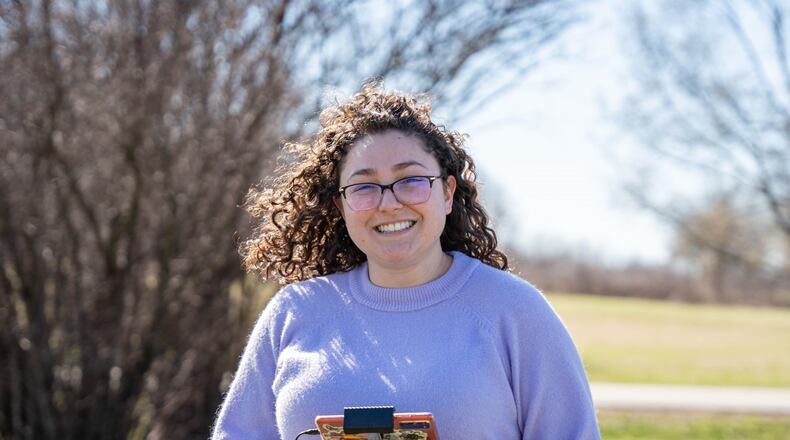Hamby started her career with the county as a communications specialist in July of 2019 and was promoted to public information officer for business services in April.
“After I graduated from Vandalia-Butler, I attended Sinclair and eventually transferred to Wright State to study mass communications,” Hamby said. “My minor was in urban affairs, and I chose both very intentionally.”
Hamby said she was 17 when she knew that working in the communications field for some level of government was what she wanted to do for a career. So, when the county job opportunity came up, she jumped on it.
But she said she never expected that, in addition to working with media, the public, and other stake holders, she would be offered the chance of a lifetime – piloting one of the first drones Montgomery County put into operation.
“One of my lines of service is community and economic development,” Hamby said. “Piloting a drone will be beneficial when we need aerial photography and videography.”
Hamby learned that there exist many applications for drone technology that go well beyond video and photography, including using the unmanned vehicles to deliver supplies, like food and medicines, and for emergency response and disaster relief. Drones also have uses in agriculture, real estate photography and the film industry worldwide.
“Three of my teammates took the drone classes with me at Sinclair,” Hamby said. “We took the classes to help highlight the partnership Montgomery County has with the Unmanned Aviation Systems.”
The county has been studying the use of drone technology since 2010 when, along with the City of Dayton and the Dayton Development Coalition, the Dayton Region Israel Trade Alliance (DRITA) was created to promote business development between Israeli companies and those in Dayton.
“The creation of DRITA was the spark for everything drone here in Dayton,” Hamby said. “With the prominence of aerospace in general in Dayton, we want everyone to know we are invested in helping companies grow with this technology.”
Hamby admitted she knew nothing about drones when she was tapped to take the course. But by the end of the class, she had not only mastered classroom lessons, but had also gained hands on experience with test flights at the United Aerospace Center (UAS) at Sinclair.
“The UAS is a cool space dedicated to drone testing,” Hamby said. “We flew a little and learned a lot about rules and regulations set forth by the FAA (Federal Aviation Administration).”
Since drones and as an extension, their pilots, are sharing the skies with planes and other pilots, anyone seeking a drone license must learn all the rules of the sky. Hamby and her coworkers had two full intensive days both in the classroom and out – gaining real drone flying experience.
“My team looks at it as an opportunity to shoot video and photos that we might not be able to get on our own,” Hamby said. “We can use it for things like building regulations because the drone can fly up and help us inspect high surfaces safely.”
Hamby said the possibilities for drone usage are expansive, including flying through sewer systems, checking infrastructure and surveying. Hamby and her team were certified in October, so drone technology for the county is still relatively new.
“I anticipate it will be completely up and running in a few months,” Hamby said. “We still need to set up certain protocols and get a policy in place that makes sense for my team.”
For Hamby, becoming a licensed drone pilot isn’t just exciting, but it’s also a skill she looks forward to taking with her along her career path.
“Drones are here to stay,” Hamby said. “There is a lot of technology that comes with them and it’s constantly growing.”
Working with DRITA, the county brought an Israeli drone company to Dayton to teach them about different available drone charging docks since battery life is relatively short. The company has developed autonomous charging stations that can be located along flying routes to recharge drones.
“I want to highlight that the county is invested in drone technology and it’s not just for communications,” Hamby said. “We take it seriously because we know it’s going to continuing growing and will be useful in so many applications.”
About the Author





